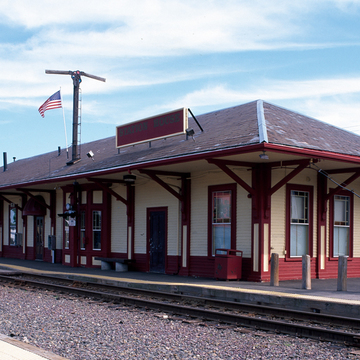The Eastern Railroad arrived in Reading in 1845, and by 1870 the Boston & Maine Railroad had acquired control of this line and constructed a new station adjacent to the tracks. An identically designed station was constructed in the adjoining town of Wakefield and both are characteristic of the standard configuration for small passenger stations that continued to be built into the early part of this century. This standard treatment consisted of a long rectangular structure surmounted by a hipped roof with wide overhanging eaves to protect the waiting passengers from smoke and cinders. In the period of the 1870s–1880s, large brackets mounted on pilasters typically supported the eaves. The Reading station had vergeboard mounted on the eaves, but this was removed in 1955.
The Reading station was at the center of the suburban development of the town and it provided a vital link to Boston, with the railroad company encouraging residential development. The area in the vicinity of this station was called Reading Highlands, a typical real estate ploy of the period. Indeed, the Boston & Maine director's reports made the company's involvement with development clear: “All our Reading trains will run and depart from this new station. This is done for the purpose of developing a large territory most eligibly located for building purposes.” The station was first remodeled in 1891, when the bay window facing the tracks was added. Several windows were probably enlarged at the same time. More recently, the station has been converted into a restaurant.






